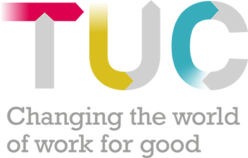How we adapt union organising to fit a digital-first world is a critical question for unions. Even before the pandemic we were seeing increasing organising challenges from fragmented workplaces and casualised work. This year though, face to face access to workers has been really hard, and many unions have found it hard too to support activists to organise locally where they do have access.
We were really interested to hear about a new survey from the organising consultancy Tectonica, in partnership with pollsters GQRR, looking at the state of digital organising across Europe, so we got in touch with its authors, who joined us for a webinar to talk about their findings and how we can try to benchmark our own journeys into digital organising.
Digital organising is a practice that goes beyond messaging and even mobilising. It is a way of coordinating people to initiate action, using digital methods and tools to distribute power, demand collective action and create effective change.
We liked this simple framework that Tectonica came up with to classify the components of digital organising work.

COMMUNICATIONS:
1. Broadcast Communication & Social Media: Using digital messaging tools for one-way communication (such as basic mass email systems and social media announcements, a website that communicates information, etc.).
MOBILISING:
2. Recruitment, List Building & Engagement: Using digital mobilising tools for purposes that include simple two-way communication (conducting list building, petitions and surveys, digital advertising, donation drives, etc.)
3. Audience Segmentation & Organisation-Directed Activism: Building and scaling relationships with digital technologies, two-way communication that includes listening and tailored responses (segmented email and communications, ladder of engagement which leads to increased level of involvement, etc.)
ORGANISING:
4. Supporter-Based Organising: Digital mobilisation is blended with organising e.g. activists are encouraged to generate their own creative content or organise events around a centrally decided theme on a particular occasion.
5. Fully Decentralised Organising: Decentralised and self-organising with technology (distributed organising, autonomous group organising, peer2peer organising, etc.). Autonomous groups determine their own strategies and implement them. The organisation uses methods online to be led and accountable to their activists.
It isn’t a linear thing – we need to to a bit of all of it – although most of our organisations are currently stronger at the comms end than the decentralised end and are growing out in that direction.
At its more decentralised end, it’s about giving activists the tools they need to take leadership roles themselves in the work. New techniques like peer-to-peer texting and distributed event organising are giving members the scope to work directly on a campaign, and collaborative tools help broaden strategic deliberation and decisions.
This shouldn’t really be new to us. Unions have been putting members in control of their own campaigns more than most progressive organisations for over a century. But moving established ways of working into their digital equivalents can bring a cultural challenge that’s even bigger than the technical ones.
It was great to hear in the session from people around unions who are trying new ways of working, at a branch, regional or national level in their unions. And it’s something we’ll be continuing to follow at the Digital Lab, so look out for more resources and events soon.
Resources
- The full report is available for download from Tectonica here: www.tectonica.co/euroreport
- If you want to evaluate how you fit across the categories of their digital organising framework, you can also use this Google spreadsheet to plot it. (Make sure to make a copy into your own Google account before using it though, or you’ll be using the default one and everyone else will overwrite your work!)

